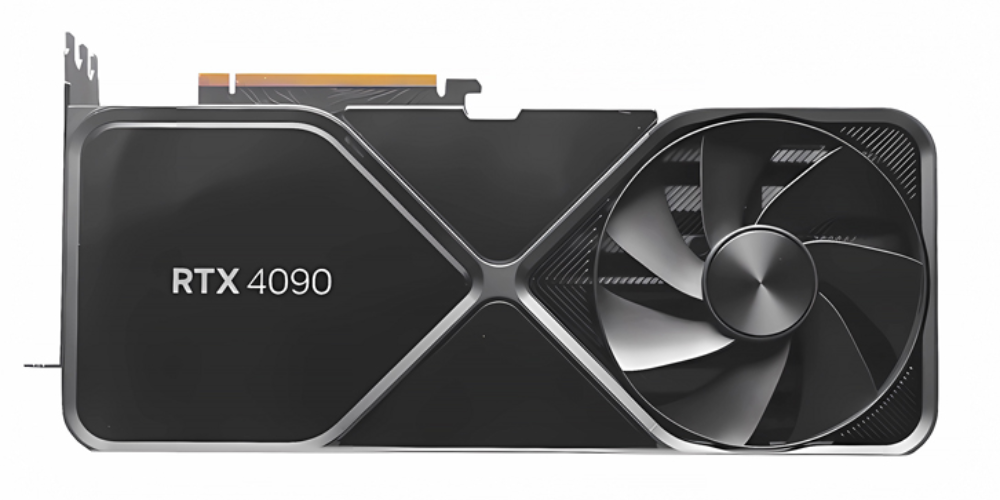Pushing the Limits: Teclab's Ultimate GeForce RTX 4090 SUPER Creation Unveiled
- 17/07/2024

The world of graphical processing is saturated with innovations and technological advancements, and Teclab has made waves with their latest creation. They have assembled a one-of-a-kind GeForce RTX 4090 SUPER GPU, leveraging binned G6X memory, a 3090 Ti HOF OC Lab PCB, and NVIDIA's AD102. This unique offering not only stands out in its engineering but also demonstrates a 13% performance increase over the stock version, showcasing Teclab's prowess in modifying and maximizing GPU capabilities.
The Evolution of Teclab's Creations
Teclab has long been known for its extraordinary modifications to NVIDIA’s GPUs. Over the years, the company has continually pushed the boundaries of what’s possible, modifying existing models to achieve unprecedented performance levels. Their latest project, the GeForce RTX 4090 SUPER, is a testament to their dedication to innovation. While NVIDIA might not have an official 4090 SUPER model, the team at Teclab wasn’t deterred—they took matters into their own hands, combining the elements of an RTX 4090 with some of the most powerful aspects of the RTX 3090 Ti.
Anatomy of the Frankenstein GPU

The heart of this creation lies in its Frankenstein nature. Teclab utilized a PCB originally designed for the GALAX RTX 3090 Ti HOF OC LAB Edition, known for its 28 power phases and dual 16-pin connectors. Despite the PCB featuring NVLINK connectors, which aren’t functional with the RTX 4090, this board was a solid foundation for Teclab's ambitious project. The ultimate goal was to push the boundaries of the RTX 4090 by enhancing it with superior components and modifications.
Modifying for Excellence: From GA102 to AD102
To achieve this feat, Teclab replaced the GeForce RTX 4090’s GA102 "Ampere" GPU with the AD102-300-A1 "Ada" GPU die. The memory was also swapped out for binned 24 Gbps GDDR6X (ZF) modules from the original 21 Gbps GDDR6X (ZC) configuration. This combination was far from simple and required multiple adjustments, including modifying strap settings, updating BIOS, and changing the power supply project from 1.8V to 1.2V (External). Each of these modifications was crucial in ensuring that the new components worked seamlessly together.
Testing the Limits: Performance Analysis
The modded GeForce RTX 4090 SUPER was not just assembled but thoroughly tested under various conditions. Initially, the card exhibited similar performance to a stock RTX 4090, but the magic happened when the binned G6X dies were fully utilized. In an 8K resolution test using the Unigine Superposition benchmark, the card was able to operate 13% faster without any GPU overclocking. When overclocked to 3 GHz, the performance outpaced the stock version by a whopping 16%.
Breaking Barriers: Overclocking Marvels
Overclocking the Teclab NVIDIA RTX 4090 SUPER led to even more remarkable results. Under these conditions, the card’s performance saw an increase of 40% at the same 8K resolution, thanks to clock speeds sustained at 2871 MHz and memory speeds reaching 25.8 Gbps (effectively 26 Gbps). This level of performance is almost mythical, pushing the boundaries of what standard graphical cards can achieve and setting a new benchmark for future modifications.
Implications and Market Realities
Understanding the impact of these enhancements, one has to wonder about the practical implications of releasing such a powerhouse GPU to the market. NVIDIA has not shown an inclination to release a 4090 SUPER, and with good reason—the existing RTX 4090 already commands a price tag near $2000. To introduce an even more high-powered variant would drive the costs even higher, without a pressing market need from competitors. Still, Teclab's experiment serves as an important insight into what might have been, and what could still come, in the GPU market.
Looking Forward: The Future of GPU Technology
As exciting as the GeForce RTX 4090 SUPER is, it's also a mere glimpse of what is to come. While the fastest memory modules currently in use are rated at 23.5 Gbps, there are already discussions about next-generation GDDR7 standards to be utilized in future RTX 50 "Blackwell" GPUs. The technological advancements in graphic processing units seem boundless, and Teclab's bold innovations keep the industry’s momentum moving forward.
In conclusion, Teclab's creation of the GeForce RTX 4090 SUPER is an exciting achievement in the world of GPU modding and performance enhancement. By combining cutting-edge components and implementing meticulous modifications, they have offered a tantalizing glimpse into the potential future of graphical processing power. As the graphics card industry continues to evolve, innovations like these will undoubtedly pave the way for the next generation of high-performance computing.
Latest Articles
-
![Revitalizing a Classic: The Tactical Edition's Journey from Legacy to Limited-Time Value]() Revitalizing a Classic: The Tactical Edition's Journey from Legacy to Limited-Time Value In the world of tactical gaming, new opportunities arise that bring classic titles back into the spotlight with modern twists and attractive pricing. Recent announcements have put a spotlight on a refreshed tactical edition of a renowned st...
Revitalizing a Classic: The Tactical Edition's Journey from Legacy to Limited-Time Value In the world of tactical gaming, new opportunities arise that bring classic titles back into the spotlight with modern twists and attractive pricing. Recent announcements have put a spotlight on a refreshed tactical edition of a renowned st... - How-to
- Eleanor Wilson
- 06/01/2026
-
![Embodied Shadows: The Transformation of a Tormented Soul]() Embodied Shadows: The Transformation of a Tormented Soul This piece discusses the experience of portraying one Among the most infamous figures from the universe of Stranger Things, with the actor reflecting on how embodying such an evil and tormented presence has affected him. Across a span of tw...
Embodied Shadows: The Transformation of a Tormented Soul This piece discusses the experience of portraying one Among the most infamous figures from the universe of Stranger Things, with the actor reflecting on how embodying such an evil and tormented presence has affected him. Across a span of tw... - News
- Eleanor Wilson
- 06/01/2026
-
![30 Years of Innovation: Celebrating a Legendary Milestone with Crossover Magic]() 30 Years of Innovation: Celebrating a Legendary Milestone with Crossover Magic Anticipation is building as the renowned game developer prepares to celebrate a milestone year. In 2026, a series cherished for decades will mark its 30th anniversary with a range of intriguing projects.
A short video was recently released...
30 Years of Innovation: Celebrating a Legendary Milestone with Crossover Magic Anticipation is building as the renowned game developer prepares to celebrate a milestone year. In 2026, a series cherished for decades will mark its 30th anniversary with a range of intriguing projects.
A short video was recently released... - News
- Eleanor Wilson
- 06/01/2026






